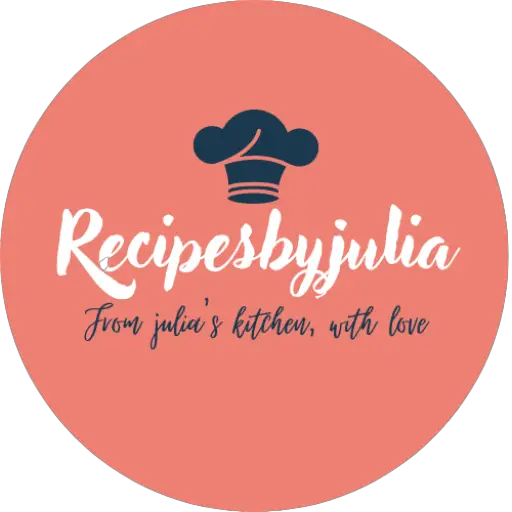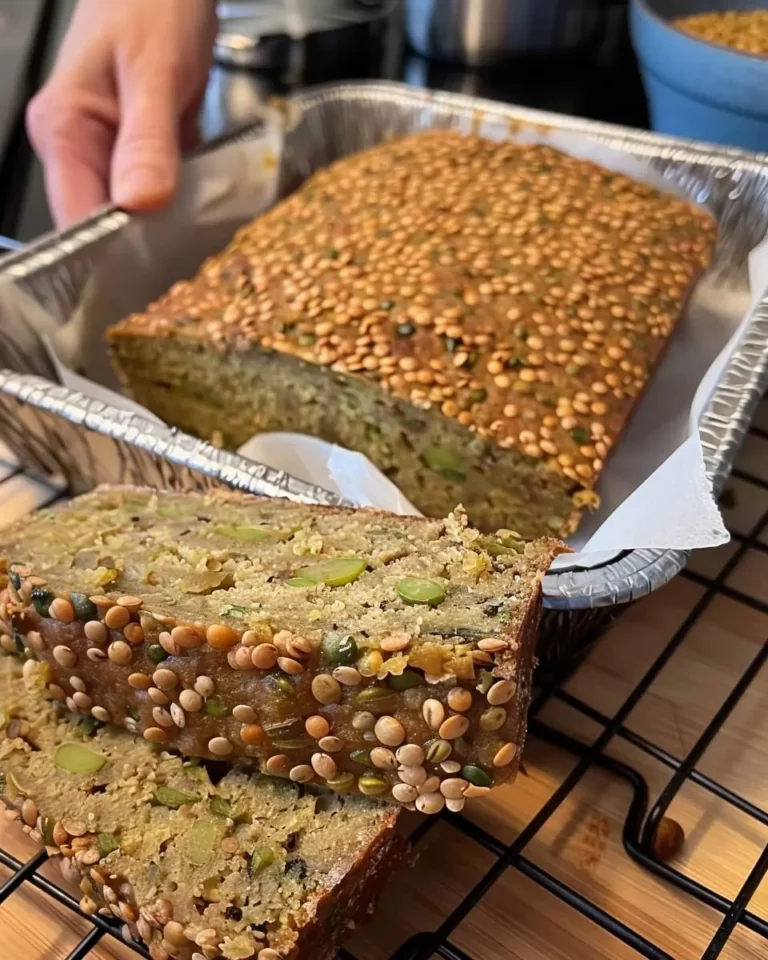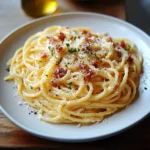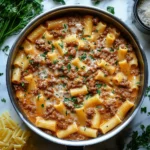Are you looking for a nutritious, delicious, and easy-to-make bread that’s perfect for your healthy lifestyle? Look no further than this Flourless Lentil Seed Bread Recipe! Packed with wholesome ingredients like lentils, seeds, and psyllium, this bread is a fantastic option for anyone looking to add more plant-based goodness to their diet. Whether you’re gluten-free, following a low-carb plan, or just love trying new recipes, this lentil seed bread is a must-try.
About the Recipe
Nutritional Benefits of Lentil Seed Bread
Lentils are a powerhouse of nutrition, loaded with protein, fiber, and essential vitamins and minerals. By using ground lentils as the base for this bread, you’re creating a product that’s both hearty and nourishing. Combined with seeds like pumpkin, sunflower, and psyllium, this bread offers a rich source of omega-3 fatty acids, dietary fiber, and essential minerals like magnesium and zinc.
Who Will Love This Recipe?
This recipe is perfect for health-conscious individuals, those following gluten-free or low-carb diets, and anyone who enjoys the rustic, nutty flavors of homemade bread. It’s also a great option for meal preppers, as this bread stores well and can be enjoyed throughout the week.
Ingredients Needed
To make this delicious Flourless Lentil Seed Bread, you’ll need the following ingredients:
- 3/4 cup (160g) lentils, ground
- 1 glass of water
- 1 tablespoon olive oil
- 2 eggs
- Salt, to taste
- 1 teaspoon baking soda
- 1 tablespoon apple cider vinegar
- 40g psyllium seeds
- 30g pumpkin seeds
- 30g sunflower seeds
- Sesame seeds, for topping
Possible Ingredient Substitutions
If you’re short on any of the ingredients or need to cater to dietary restrictions, here are a few swaps you can consider:
- Lentils: Replace with chickpea flour for a slightly different flavor profile.
- Eggs: Use flaxseed or chia seeds mixed with water as a vegan egg substitute.
- Psyllium seeds: Substitute with ground flaxseed or chia seeds if needed.
Kitchen Equipment Required
Before you start, make sure you have the following kitchen tools on hand:
- Baking dish (preferably non-stick)
- Mixing bowls
- Skillet (for toasting seeds)
- Wire rack (for cooling)
- Measuring cups and spoons
- A whisk or electric mixer
Optional Gadgets for Easier Preparation
For those who love their kitchen gadgets, a food processor can help grind the lentils, and a stand mixer can make mixing a breeze.
Step-by-Step Instructions
Preheating and Preparing
Start by preheating your oven to 180°C (350°F). Grease a baking dish with vegetable oil to ensure your bread doesn’t stick.
Mixing the Wet Ingredients
In a large mixing bowl, combine the ground lentils, water, olive oil, eggs, and a pinch of salt. Whisk until the mixture is smooth and well combined.
Adding the Leavening Agents
Next, add the baking soda and apple cider vinegar to the mixture. This combination will help the bread rise and give it a light, airy texture. Stir until thoroughly mixed.
Incorporating the Psyllium Seeds
Stir in the psyllium seeds and let the mixture soak for 10 to 15 minutes. This step is crucial as the psyllium seeds will help bind the ingredients together, giving the bread structure and a satisfying chew.
Toasting and Folding in the Seeds
While the mixture is soaking, lightly toast the pumpkin and sunflower seeds in a skillet over medium heat. Toasting brings out the natural oils and enhances the flavor of the seeds. Once toasted, fold the seeds into the batter until evenly distributed.
Transferring and Topping the Batter
Transfer the batter into your prepared baking dish, spreading it evenly. Brush the top with a bit of vegetable oil and make shallow incisions across the surface. Sprinkle sesame seeds on top for added crunch and flavor.
Baking and Cooling
Bake the bread in the preheated oven for 50 to 60 minutes, or until it’s golden brown and cooked through. To test for doneness, insert a toothpick into the center—it should come out clean. Once baked, let the bread cool in the pan for a few minutes before transferring it to a wire rack to cool completely.
Tips for the Perfect Lentil Seed Bread
How to Achieve the Ideal Texture
The key to a perfect lentil seed bread lies in the soaking of the psyllium seeds and careful folding of the seeds into the batter. Make sure not to skip these steps, as they ensure the bread holds together well and has a delightful texture.
Common Mistakes to Avoid
- Overmixing: Once you’ve added the seeds, avoid overmixing the batter. This can make the bread too dense.
- Skipping the Soak: Don’t rush the soaking process. This step is vital for the psyllium seeds to absorb moisture and bind the bread together.
Variations and Swaps
Gluten-Free and Vegan Options
To make this bread gluten-free, simply follow the recipe as is, since it’s naturally free from gluten. For a vegan version, replace the eggs with flax or chia eggs.
Adding Herbs and Spices
Elevate the flavor by adding herbs like rosemary, thyme, or basil to the batter. A pinch of garlic powder or cumin can also add a lovely savory note.
Other Seed Options
Feel free to experiment with other seeds like chia, hemp, or even poppy seeds. These can add unique textures and flavors to your bread.
Serving Suggestions
Best Ways to Enjoy Lentil Seed Bread
This bread is incredibly versatile. Enjoy it toasted with a smear of avocado or hummus for a healthy snack. It also pairs beautifully with soups, stews, or a hearty salad.
Pairing Ideas: Spreads, Soups, and More
For a delicious meal, pair your lentil seed bread with a bowl of tomato basil soup or a fresh garden salad. It’s also delightful with a sweet spread like almond butter and a drizzle of honey.
How to Store and Reheat Leftovers
Storing in the Fridge or Freezer
To keep your bread fresh, store it in an airtight container in the fridge for up to a week. If you want to keep it longer, slice the bread and store it in the freezer for up to three months.
Reheating Tips for Freshness
When you’re ready to enjoy, reheat slices in the oven at 180°C (350°F) for about 10 minutes or toast them lightly. This will bring back the bread’s fresh, crunchy texture.
Nutritional Information
Each slice of this Flourless Lentil Seed Bread is packed with nutrients. Here’s a rough breakdown per serving:
- Calories: 120
- Protein: 6g
- Fat: 7g
- Carbohydrates: 10g
- Fiber: 4g
Why This Recipe is a Game Changer
Health Benefits
This bread is a fantastic alternative to traditional wheat bread, especially for those looking to boost their protein and fiber intake. The combination of lentils and seeds makes it a nutrient-dense option that supports heart health, digestion, and sustained energy levels.
Versatility and Ease of Preparation
Beyond its health benefits, this bread is incredibly versatile. It’s easy to make and adaptable to various dietary needs and flavor preferences, making it a staple in any kitchen.
Call to Action
If you loved this recipe, don’t keep it to yourself! Share it with friends and family who are also on the hunt for nutritious and delicious meal options. And if you haven’t already, be sure to subscribe to our blog for more healthy recipes, tips, and kitchen inspiration delivered straight to your inbox.
Conclusion
Incorporating more wholesome ingredients into your diet doesn’t have to be a chore, especially with recipes like this Flourless Lentil Seed Bread. It’s a delightful, healthy, and versatile option that can easily become a staple in your home. Whether you’re looking to improve your diet or simply love trying new recipes, this bread is a winner.
Frequently Asked Questions
1. What are the benefits of psyllium seeds? Psyllium seeds are a great source of soluble fiber, which can help with digestion, regulate blood sugar levels, and promote heart health.
2. Can I make this bread without eggs? Yes, you can replace the eggs with flax or chia eggs for a vegan version. Mix 1 tablespoon of ground flaxseed or chia seeds with 3 tablespoons of water per egg replacement.
3. How long does the bread stay fresh? When stored in an airtight container in the fridge, the bread stays fresh for up to a week. You can also freeze it for up to three months.
4. Is this recipe suitable for a low-carb diet? This bread is lower in carbs than traditional bread, making it suitable for a low-carb diet. However, the exact carb content will depend on portion sizes and specific ingredients used.
5. Can I add sweeteners to this bread? Absolutely! If you prefer a slightly sweet version, you can add a tablespoon of honey or maple syrup to the wet ingredients.






